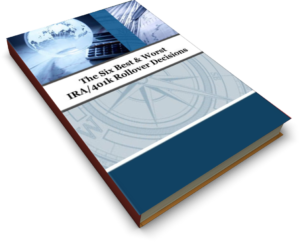Government Distributes $1.8 Trillion in Benefits Annually. What Is Your Fair Share?
In the United States, many benefits are available from federal, state, and local government assistance programs that help people in need. Sometimes, the benefits are open to everyone, such as disaster relief, while other benefits are tied to your income. Often, online tax software can suggest programs available to you by evaluating your income against program requirements.

Types of Benefits Available
Federal programs are available to any U.S. citizen, whereas you must live in a particular state or locality to receive its benefits. Let’s focus on a few of the most popular benefits programs that are designed to help those with lower income.
- Food: Each state administers the federal government’s Supplemental Nutrition Assistance Program (SNAP), commonly called food stamps. Millions of people qualify for this program and receive assistance for the purchase of basic food items. Maximum income levels vary by state. For example, a couple with annual income below $20,450 can qualify for SNAP in Illinois. Other food related benefits are available from the Child and Adult Care Food Program, Commodity Supplemental Food Program, Special Nutrition Program for Women, Infants and Children, and many more.
- Health: The Affordable Care Act provides millions of dollars in health insurance subsidies for low- and middle-income families. The subsidies are available when you buy from the Health Insurance Marketplace, and the amount of subsidy is highest for those with the lowest income. Medicare and Medicaid also provide substantial health-care benefits for the elderly or poverty-stricken. Communities often have free clinics that offer some level of health care to the poor. Social Security offers two forms of disability payments that help those who meet the program requirements. There are also special programs at all levels of government that specialize in specific health problems, such as HIV/AIDS, mental illness, drug/alcohol dependency, maternity/childbirth and end-stage renal disease.
- Housing: Various federal programs from the Department of Housing and Urban Development help you find or refinance a mortgage, or help you to sell your current home and move into more affordable arrangements. There are also programs that assist the homeless, and most localities have shelters available for the indigent. Special programs exist to help with housing for the physically challenged, those wanting assistance with energy costs, victims of housing discrimination, folks looking for public housing, and many others.
- Unclaimed Money: You may be entitled to unclaimed money stemming from bank failures, matured savings bonds, pensions, mortgage refund and other sources. This is your money, but you haven’t collected it yet. Each state keeps a database of unclaimed funds and property. You can also search the Pension Benefit Guaranty Corporation’s database for unclaimed pension funds from bankrupt companies. The IRS or state tax authority will let you know if you have an unclaimed refund. Other agencies that can help you claim money due you include the U.S. Treasury, the Federal Deposit Insurance Corporation, the Securities and Exchange Commission, the Federal Housing Administration, the Veterans Administration and several others.
Software Can Help
Using tax software can help you easily identify opportunities for additional savings. Often, the software will analyze your situation and suggest available savings or benefits. A tax preparation program is the perfect vehicle for finding benefits and savings, because it has almost all of the relevant information: your income, dependents, where you live, employment status, military status, health costs and insurance, and dozens of other factoids that it can analyze to find you money. Be sure to answer the software’s prompts when it offers to find those savings for you.













 The truth is, most people underestimate the importance of owning a great flashlight for their home, car or boat.
The truth is, most people underestimate the importance of owning a great flashlight for their home, car or boat.
 After a recent investigation, millions of car drivers have discovered they have been overpaying for their car insurance, needlessly, for many years. Shockingly, in many scenarios drivers were paying up to 50% more than they should be.
After a recent investigation, millions of car drivers have discovered they have been overpaying for their car insurance, needlessly, for many years. Shockingly, in many scenarios drivers were paying up to 50% more than they should be.